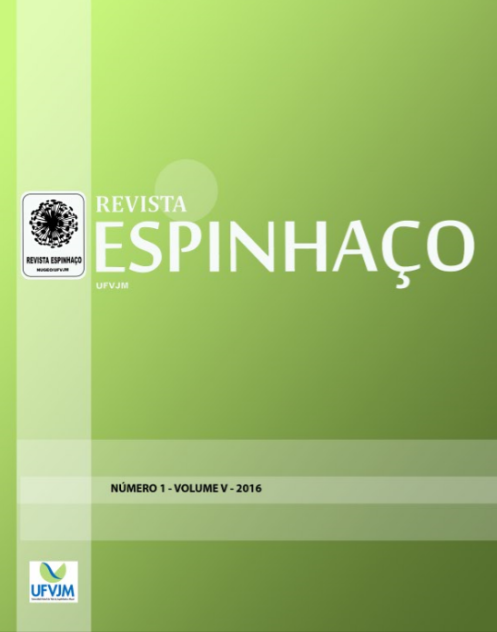Commuting and road infrastructure in the Micro-regions of Minas Gerais state, Brazil
DOI:
https://doi.org/10.5281/zenodo.3958049Keywords:
Commuting, road infrastructure, micro-regions of Minas Gerais stateAbstract
Commuting has traditionally been used as an indicator of integration between places. With the consolidation of the industrialization and urbanization processes of the country, it becomes increasingly relevant to examine the commuting, including how road infrastructure can facilitate the displacement of individuals in space. This article aims to evaluate the possible relationship between road density in the intensity of daily commutes for work and study among municipalities in the micro-regions of Minas Gerais. As part of the analysis methodology, a Road Density Index was proposed, which considers the paved roads that make up the state grid until 2013, as well as the number of municipal seats and the resident population in each micro-region. For the analysis of the pendulous movements, the sample microdata of the Demographic Census of 2010 was used, through the combination of the variables that identify the municipality the working and/or study. The results allowed to observe that in addition to a relation of low determination, considering the insignificant values obtained by the analysis of linear regression general and local, the regions of the state that had dense road mesh, especially in the region of the Triangulo Mineiro, also exhibited low the spatial mobility of the population. There are also the microregions that stood out for the high mobility, as of Belo Horizonte, Ipatinga and Conselheiro Lafaiete, located in the central portion of Minas, despite a "deficit" road infrastructure.
References
Aranha V. 2005. Mobilidade pendular na metrópole paulista. São Paulo Em Perspectiva. 19 (4): 96-109.
Beaujeu-Garnier J. 1980. Geografia da população. São Paulo: Companhia Editora Nacional.
Branco MLC, Firkowski OLCF, Moura R. 2005. Mobilidade pendular: abordagem teórica e reflexões sobre o uso do indicador. Anais do XI Encontro Nacional da Associação Nacional de Pesquisa e Pós-Graduação em Planejamento Urbano e Regional. Salvador.
DER-MG. Departamento de Estradas de Rodagem de Minas Gerais. 2014. Mapa rodoviário de Minas Gerais 2013. Curitiba: Temática Cartografia.
Jardim E. 2006. Migração pendular intrametropolitana no Rio De Janeiro: A condição de renda das pessoas que trabalham ou estudam fora do município de residência em 1980 e 2000. Anais do XV Encontro Nacional de Estudos Populacionais, ABEP. Caxambu.
Jones SR. 1981. Accessibility measures: a literature review. Transport and Road Research Laboratory, Laboratory Report 967.
Lobo C. 2016 (A). Dispersão espacial da população no Brasil. Mercator. 15 (3):19-36.
Lobo C. 2016 (B). Mobilidade pendular e a dispersão espacial da população: evidências com base nos fluxos com destino às principais metrópoles brasileiras. Caderno de Geografia. 26 (45).
Lobo C, Matos R, Cardoso L, Comini L, Pinto G. 2015. Expanded commuting in the metropolitan region of Belo Horizonte: evidence for reverse commuting. Rebep. 32 (2): 219-233.
Lobo, CFF, Cardoso L, e Matos, R E S (2009). Mobilidade pendular e centralidade espacial: considerações sobre o caso da região metropolitana de Belo Horizonte. Instituto de Geociências. Disponível em: (http://www.cbtu.gov.br/monografia/2009/trabalhos/artigos/ planejamento/4_130_AC.pdf).
Maricato E. 2008. A cidade e o automóvel. Ciência & Ambiente. 37 (1):5-12.
Moura R, Branco MLC, Firkowski OLCF. 2005. Movimento pendular e perspectivas de pesquisas em aglomerados urbanos. São Paulo Em Perspectiva.19 (4): 121-133.
Ojima, R.; Marandola JR, E.; Pereira, R. H. M.; da Silva, R. B. (2010) O estigma de morar longe da cidade: repensando o consenso sobre as “cidades-dormitório” no Brasil. Cadernos metrópole, São Paulo, v. 12, n. 24, p. 395-415.
Ojima R, Silva R, Pereira R. 2008. A Mobilidade Pendular na Definição das Cidades-Dormitório: caracterização sociodemográfica e novas territorialidades no contexto da urbanização brasileira. Anais do XVI Encontro Nacional de Estudos Populacionais, ABEP. Campinas.
Pereira WAA et al. 2000. Aspectos da crise do transporte urbano. Revista dos Transportes Públicos. 23 (89).
Pereira MFV. 2009. Redes, sistemas de transportes e as novas dinâmicas do território no período atual: notas sobre o caso brasileiro. Revista Sociedade & Natureza. 1 (21).
Pereira LAG, Lessa S. 2011. O processo de planejamento e desenvolvimento do transporte rodoviário no Brasil. Revista Sociedade & Natureza. 12 (40): 26 - 46.
Silveira MR. 2011. (org.). Circulação, transportes e logística. São Paulo: Outras Expressões, 2011. (Coleção Geografia em Movimento).
Santos M, Silveira ML. 2001. Brasil: território e sociedade no início do século XXI. 5a. ed. Rio de Janeiro: Record, 473p.
Downloads
Published
How to Cite
Issue
Section
License
Copyright (c) 2022 Revista Espinhaço

This work is licensed under a Creative Commons Attribution-NonCommercial-NoDerivatives 4.0 International License.


